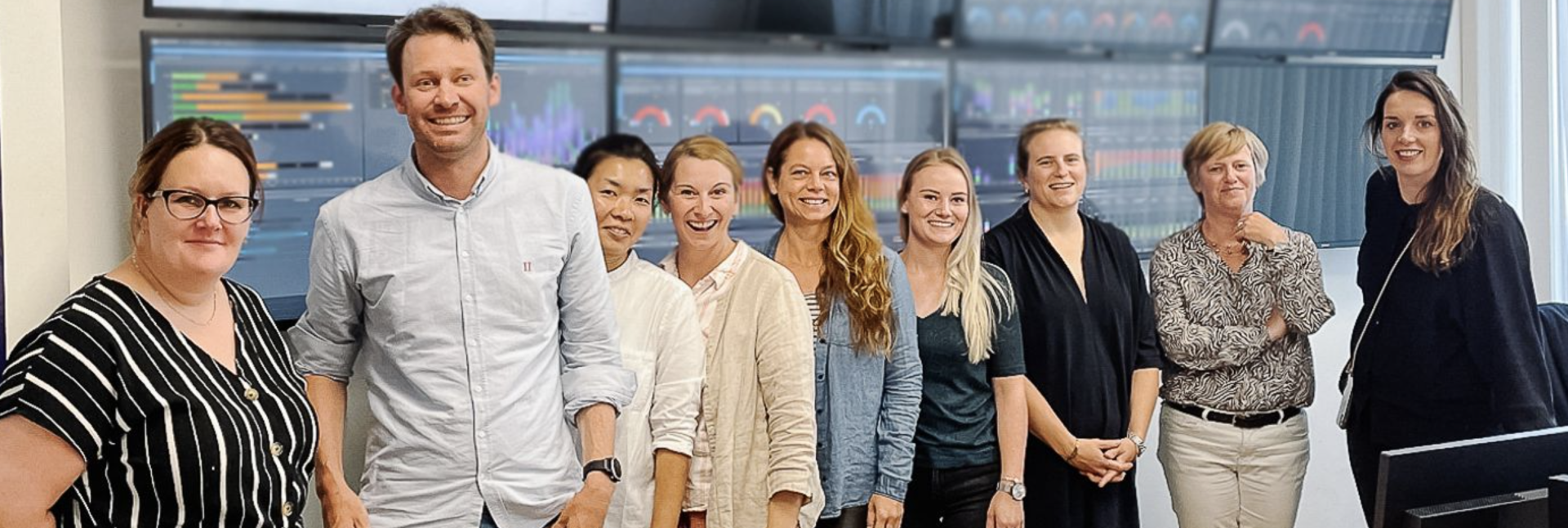
CAPACITY PLANNING AND PATIENT FLOW IN HOSPITALS
Deepinsight is developing technology for capacity planning and patient flow in hospitals. A partnership with Maartje Zonderland, one of the world's foremost in the field, provides the experience we need to succeed.
We have seen ourselves how Dutch hospitals take data stored in their EHR systems and use it to optimise patient flow and capacity planning. The same opportunities also exist in Norway. So why aren't they being exploited? asks Håvard Thøgersen, Chief Operating Officer at Deepinsight.
Together with colleagues from Deepinsight and our sister company DIPS, Håvard was on a research trip to the Netherlands in the summer of 2022. The trip included tours of three hospitals to see how data and planning tools are used to, among other things, make better use of
the operating rooms in Dutch hospitals.
COLLABORATION WITH RECOGNISED EXPERT
The Netherlands is a pioneering country in using technology to streamline operation planning and patient flow.
Deepinsight and Maartje Zonderland, one of the world's foremost experts in the field of data-driven process optimization, have recently become partners. She has extensive, international experience in developing and applying data models to administrative health data in order to optimise patient flow, reduce waiting and access times in hospitals and better utilise operating rooms and cath labs (Catheterization laboratory). She will now assist Deepinsight in developing products the Norwegian healthcare system needs in order to improve patient flow and better utilise operating room capacity.
We are proud to partner up with such a recognised expert. She brings crucial knowledge and experience, says Thøgersen.
REDUCED WAITING TIME BY TEN WEEKS
Zonderland was one of the first to obtain a doctorate at CHOIR, the Center for Healthcare Operations Improvement & Research at the University of Twente. She specialised in operation research and statistics targeting the healthcare system. During her studies, she wrote several scientific publications based on her work, including "Planning and scheduling of semi-urgent surgeries" and "Appointment planning in outpatient clinics and diagnostic facilities".
Today she runs her own company where she offers consultancy services and assists companies in health sectors worldwide with optimising planning and resource use in hospitals. In addition, she is still active in the research environment where her work includes supervising several students within the same research field.
I use my experience to develop optimisation models that use patient administrative data to streamline resource use and patient flow, she says.
Through her work, Zonderland helps hospitals with advanced analyses of large amounts of data and uses the insights to take acute patient and unforeseen situations into account, manage day-to-day operations well and give patients the treatment they need.
A heart centre that adopted an optimisation model developed by Zonderland was able to increase the number of heart surgeries by 25 percent in just three months. In addition, the waiting list of twelve to fourteen weeks was reduced to just two to three weeks.
Imagine how this impacts the psyche of the patients who are waiting in line and their relatives. Using Maartje's insight, we can achieve this in Norwegian healthcare institutions as well, claims Thøgersen.
NORWAY AND DEEPINSIGHT ARE IN A UNIQUE POSITION
For the past 15 years, Zonderland has helped hospitals in countries such as the Netherlands, Canada, Malaysia and Denmark with using data-driven capacity planning and patient flow.
The most important factors for success are access to quality data and having good data structure. Norway is in a good position because of DIPS and their electronic patient records (EPJ) and structured patient data, Zonderland believes.
10 to 15 years ago we had poorer data quality in the Netherlands compared to Norway. However, Dutch hospitals still saw good results from using data-driven capacity planning and patient flows. I am very excited about the potential in Norway, where digitisation has come a long way and many processes have been digitised which means that they have been able to collect high-quality data over a longer period of time, she says.
But even with good data quality, a lot of the data required to create a solution for patient flow is buried in DIPS and is not necessarily easily accessible.
As the sister company of DIPS, we are in a unique position to exploit the opportunities in the data. Our close collaboration means that we can easily and quickly retrieve data from the patient records system and make the solution available in DIPS. Thus, it will not be perceived as "another program you have to log in to" that is unnecessarily time-consuming and potentially decrease the patient security, says Thøgersen.
EASY TO CONNECT TO EHR SYSTEM IN DIPS
Although we achieve good results, it’s still challenging to integrate with the various EHR systems in the Netherlands. In some cases, this affects the flexibility of capacity planning and patient flow, explains Zonderland.
Dutch hospitals have therefore created several positions that work with capacity planning to ensure quality when the optimisation models are put into practice.
Deepinsight will be able to build products for capacity planning and patient flow that are more accurate and flexible than what they currently manage in the Netherlands. This is primarily due to the fact that we are the sister company of DIPS, and thus can integrate with their EHR systems in Norway in a simple way, says Erica Gibson.
Zonderland is looking forward to following the developments in the Norwegian healthcare system in the coming years.
The possibilities and the quality of available data indicate that you can get very far in a short time, she says.


